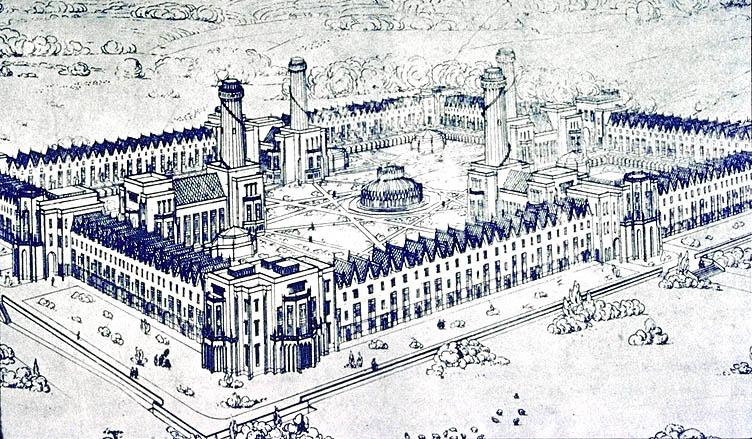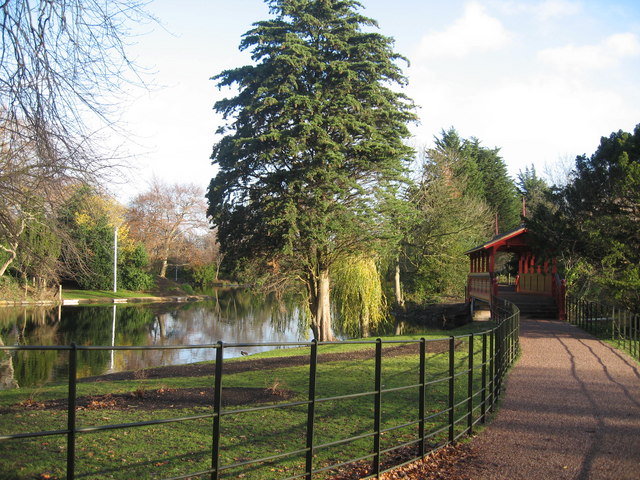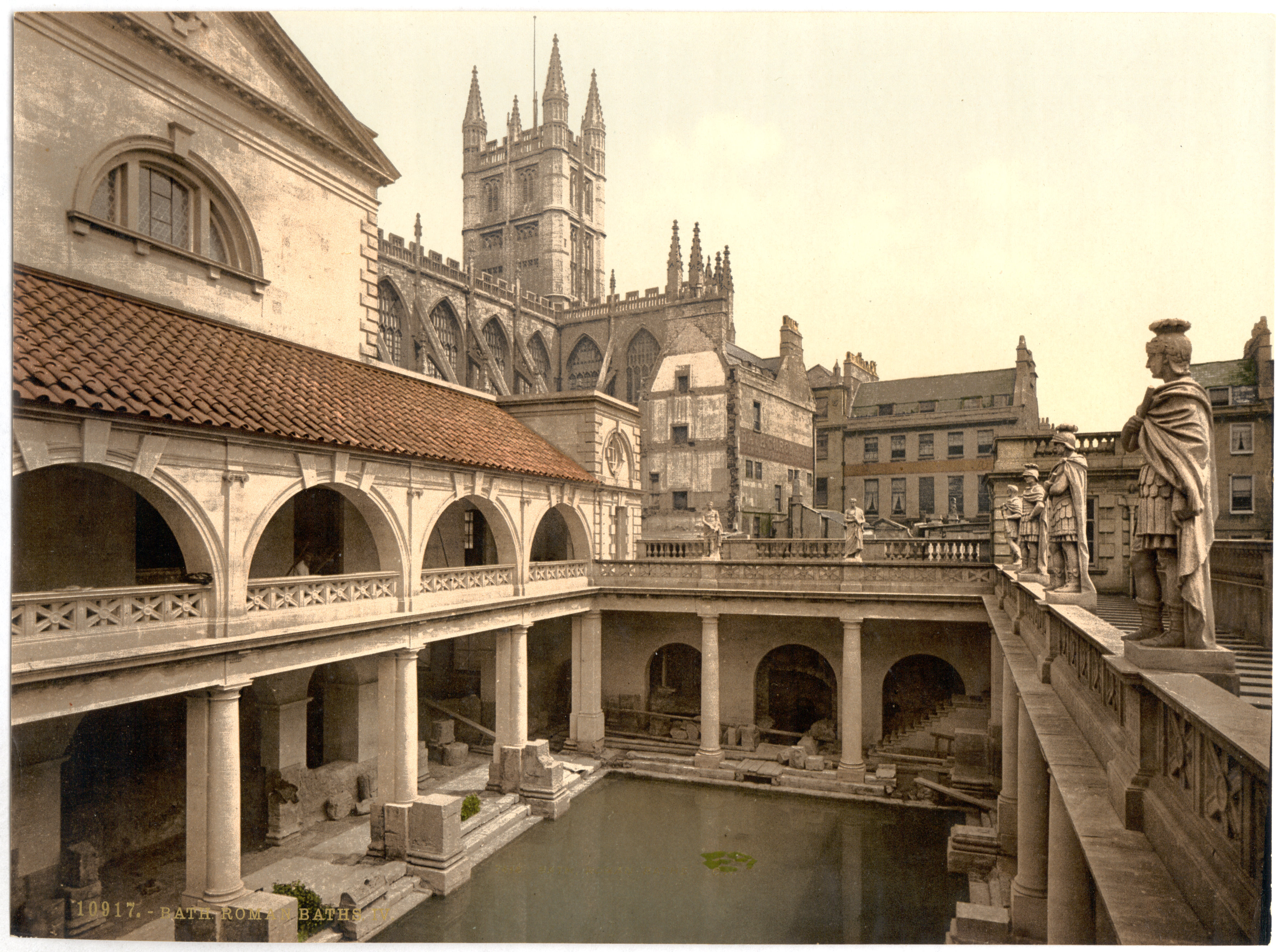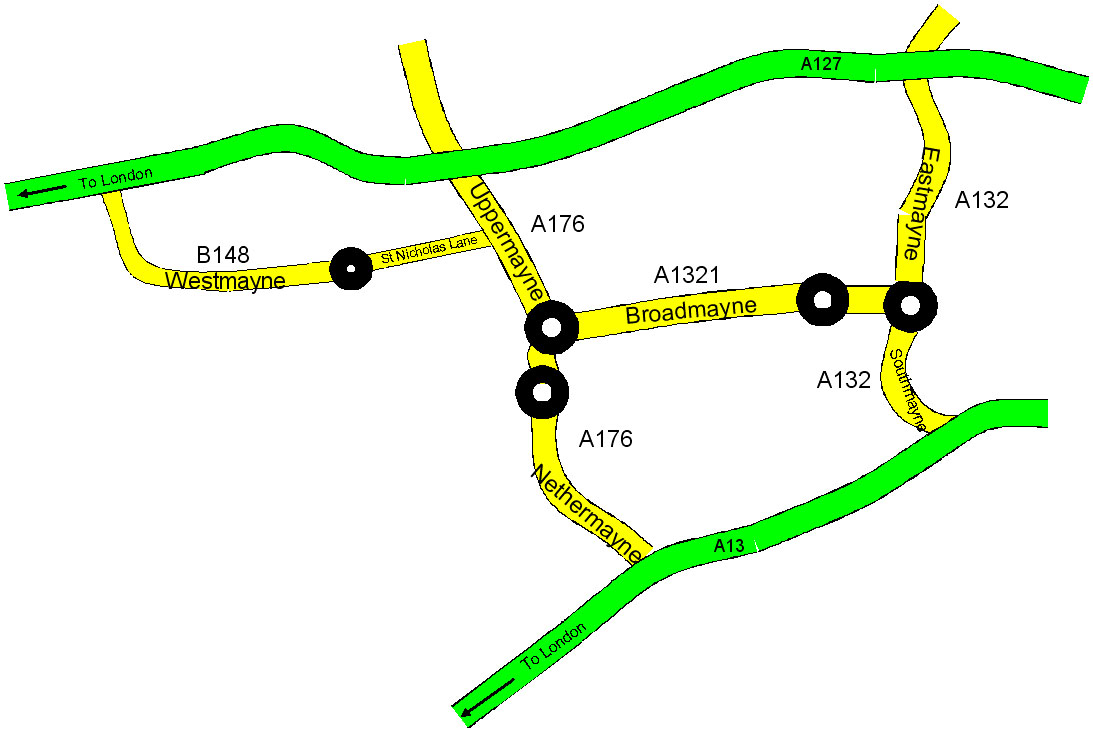|
Co-operative Retail Services
Co-operative Retail Services (CRS, originally CWS Retail) was the second-largest consumer co-operative society in the United Kingdom. In 2000, it was dissolved by its members, merging with the larger Co-operative Wholesale Society, to form the Co-operative Group (CWS) Ltd. History In 1933, CWS formed a retail division tasked with taking over failing retail consumer co-operatives, and setting up shop in new areas. This division was demerged to form Co-operative Retail Services during 1957. The demerger was prompted by complications with CWS's democratic governance: it was becoming a larger retailer in its own right but it was a secondary co-operative, owned by other co-operatives, meaning the retail division's customers had little representation on the board. However elections were still held with rival political groups standing, such as the 1960 Committee which attempted to give a more left-wing leadership to the London Region of CRS. CRS expanded and opened up new co-op sho ... [...More Info...] [...Related Items...] OR: [Wikipedia] [Google] [Baidu] |
Consumer Co-operative
A consumers' co-operative is an business, enterprise owned by consumers and managed democracy, democratically and that aims at fulfilling the needs and aspirations of its members. Such co-operatives operate within the market economy, market system, independently of the state, as a form of mutual aid (organization), mutual aid, oriented toward service rather than pecuniary profit. Consumers' cooperatives often take the form of retail outlets owned and operated by their consumers, such as food cooperatives, food co-ops. However, there are many types of consumers' cooperatives, operating in areas such as health care, insurance, housing cooperative, housing, utility cooperative, utilities and personal finance (including credit unions). In some countries, consumers' cooperatives are known as cooperative retail societies or retail co-ops, though they should not be confused with retailers' cooperatives, whose members are retailers rather than consumers. Consumers' cooperatives may, in tu ... [...More Info...] [...Related Items...] OR: [Wikipedia] [Google] [Baidu] |
Scotmid
The Scottish Midland Co-operative Society (trading as Scotmid), is an independent retail consumers' co-operative based in Edinburgh, Scotland. Originally founded as St. Cuthbert's Co-operative Society in 1859, it merged with Dalziel Co-operative Society of Motherwell in 1981 to form Scotmid. With over 3,900 staff, the co-operative has 177 Scotmid supermarkets and convenience stores, nine Lakes & Dales convenience stores, 17 funeral offices, and 89 Semichem health and beauty shops throughout Scotland, Northern Ireland and northern England. Governance Like most other retail consumers' co-operatives in the United Kingdom, Scotmid is incorporated as a registered society. Scotmid has a committee style governance structure, similar to The Co-operative Group prior to its own major governance reforms. Scotmid Board Directors are nominated by Regional Committee members and elected by members from the Regions they represent (if these positions are contested). History In 1968, Lei ... [...More Info...] [...Related Items...] OR: [Wikipedia] [Google] [Baidu] |
Bristol
Bristol () is a city, ceremonial county and unitary authority in England. Situated on the River Avon, it is bordered by the ceremonial counties of Gloucestershire to the north and Somerset to the south. Bristol is the most populous city in South West England. The wider Bristol Built-up Area is the eleventh most populous urban area in the United Kingdom. Iron Age hillforts and Roman villas were built near the confluence of the rivers Frome and Avon. Around the beginning of the 11th century, the settlement was known as (Old English: 'the place at the bridge'). Bristol received a royal charter in 1155 and was historically divided between Gloucestershire and Somerset until 1373 when it became a county corporate. From the 13th to the 18th century, Bristol was among the top three English cities, after London, in tax receipts. A major port, Bristol was a starting place for early voyages of exploration to the New World. On a ship out of Bristol in 1497, John Cabot, a ... [...More Info...] [...Related Items...] OR: [Wikipedia] [Google] [Baidu] |
Bridgend
Bridgend (; cy, Pen-y-bont ar Ogwr or just , meaning "the end of the bridge on the Ogmore") is a town in Bridgend County Borough in Wales, west of Cardiff and east of Swansea. The town is named after the medieval bridge over the River Ogmore. The River Ewenny also flows through the town. The population was 49,597 in 2021. Historically a part of Glamorgan, Bridgend has greatly expanded in size since the early 1980s – the 2001 census recorded a population of 39,429 for the town and the 2011 census reported that the Bridgend Local Authority had a population of 139,200 – up from 128,700 in 2001. This 8.2% increase was the largest increase in Wales except for Cardiff. The town is undergoing a redevelopment project, with the town centre mainly pedestrianised and ongoing works including Brackla Street Centre redevelopment to Bridgend Shopping Centre, Rhiw Car Park redevelopment, ongoing public realm improvements and the upgrade of the Bridgend Life Centre and demolition of ... [...More Info...] [...Related Items...] OR: [Wikipedia] [Google] [Baidu] |
Boscombe
Boscombe is a suburb of Bournemouth, England. Historically in Hampshire, but today in Dorset, it is located to the east of Bournemouth town centre and west of Southbourne. Originally a sparsely inhabited area of heathland, from around 1865 Boscombe developed rapidly from a small village into a seaside resort alongside Bournemouth. Its first pier opened in 1889. There are numerous architectural styles within the town, ranging from the elaborate Victorian style of the Royal Arcade and St Clement's Church, notable examples of Art Deco such as the former Gas & Water Company store at 709 Christchurch Road, and the modernist 1950s styles of the pier and Overstrand buildings. Alongside these are modern flats developments such as The Reef, The Point (sometimes called the Pointer by some residents) and Honeycombe Beach. The nickname ''Bos Vegas'' has gained popularity in recent years and occurs with slight spelling variation in the names of two Boscombe businesses. Boscombe is ho ... [...More Info...] [...Related Items...] OR: [Wikipedia] [Google] [Baidu] |
Blackwood, Caerphilly
Blackwood ( cy, Coed Duon) is a town, community (Wales), community and an Wards and electoral divisions of the United Kingdom, electoral ward on the Sirhowy River in the South Wales Valleys administered as part of Caerphilly County Borough. It is located within the Historic counties of Wales, historic county of Monmouthshire (historic), Monmouthshire. The town houses a growing number of Light industry, light industrial and High Tech, high-tech firms. It is the home town of influential rock band Manic Street Preachers. History Blackwood was founded in the early 19th century by local colliery owner John Hodder Moggridge, who lived at nearby Woodfield Park Estate: the first houses in Blackwood were built by Moggridge in an attempt to build a model village. Deplorable working conditions at the time of the Industrial Revolution, however, led to Blackwood becoming a centre of Chartism, Chartist organisation in the 1830s. The South Wales Chartist leaders John Frost (Chartist), John Fr ... [...More Info...] [...Related Items...] OR: [Wikipedia] [Google] [Baidu] |
Birkenhead
Birkenhead (; cy, Penbedw) is a town in the Metropolitan Borough of Wirral, Merseyside, England; Historic counties of England, historically, it was part of Cheshire until 1974. The town is on the Wirral Peninsula, along the south bank of the River Mersey, opposite Liverpool. At the 2011 census, it had a population of 88,818. Birkenhead Priory and the Mersey Ferry were established in the 12th century. In the 19th century, Birkenhead expanded greatly as a consequence of the Industrial Revolution. Birkenhead Park and Hamilton Square were laid out as well as the first street tramway in Britain. The Mersey Railway connected Birkenhead and Liverpool with the world's first tunnel beneath a tidal estuary; the shipbuilding firm Cammell Laird and a Great Float, seaport were established. In the second half of the 20th century, the town suffered a significant period of decline, with Containerization, containerisation causing a reduction in port activity. The Wirral Waters development is p ... [...More Info...] [...Related Items...] OR: [Wikipedia] [Google] [Baidu] |
Bath, Somerset
Bath () is a city in the Bath and North East Somerset unitary area in the ceremonial counties of England, county of Somerset, England, known for and named after its Roman Baths (Bath), Roman-built baths. At the 2021 Census, the population was 101,557. Bath is in the valley of the River Avon (Bristol), River Avon, west of London and southeast of Bristol. The city became a World Heritage Site in 1987, and was later added to the transnational World Heritage Site known as the "Great Spa Towns of Europe" in 2021. Bath is also the largest city and settlement in Somerset. The city became a spa with the Latin name ' ("the waters of Sulis") 60 AD when the Romans built Roman Baths (Bath), baths and a temple in the valley of the River Avon, although List of geothermal springs in the United Kingdom, hot springs were known even before then. Bath Abbey was founded in the 7th century and became a religious centre; the building was rebuilt in the 12th and 16th centuries. In the 17th ce ... [...More Info...] [...Related Items...] OR: [Wikipedia] [Google] [Baidu] |
Basildon
Basildon ( ) is the largest town in the borough of Basildon, within the county of Essex, England. It has a population of 107,123. In 1931 the parish had a population of 1159. It lies east of Central London, south of the city of Chelmsford and west of Southend-on-Sea. Nearby smaller towns include Billericay to the north-west, Wickford to the north-east and South Benfleet to the south-east. It was created as a new town after World War II in 1948, to accommodate the London population overspill from the conglomeration of four small villages, namely Pitsea, Laindon, Basildon (the most central of the four) and Vange. The local government district of Basildon, which was formed in 1974 and received borough status in 2010, encapsulates a larger area than the town itself; the two neighbouring towns of Billericay and Wickford, as well as rural villages and smaller settlements set among the surrounding countryside, fall within its borders. Basildon Town is one of the most densely ... [...More Info...] [...Related Items...] OR: [Wikipedia] [Google] [Baidu] |
Barnstaple
Barnstaple ( or ) is a river-port town in North Devon, England, at the River Taw's lowest crossing point before the Bristol Channel. From the 14th century, it was licensed to export wool and won great wealth. Later it imported Irish wool, but its harbour silted up and other trades developed such as shipbuilding, foundries and sawmills. A Victorian market building survives, with a high glass and timber roof on iron columns. The parish population was 24,033 at the 2011 census, and that of the built-up area 32,411 in 2018. The town area with nearby settlements such as Bishop's Tawton, Fremington and Landkey, had a 2020 population of 46,619. Toponymy The spelling Barnstable is obsolete, but retained by an American county and city. It appears in the 10th century and is thought to derive from the Early English ''bearde'', meaning "battle-axe", and ''stapol'', meaning "pillar", i. e. a post or pillar to mark a religious or administrative meeting place. The derivation from ''stapl ... [...More Info...] [...Related Items...] OR: [Wikipedia] [Google] [Baidu] |
Barnsley
Barnsley () is a market town in South Yorkshire, England. As the main settlement of the Metropolitan Borough of Barnsley and the fourth largest settlement in South Yorkshire. In Barnsley, the population was 96,888 while the wider Borough has seen an increase of 5.8%, from 231,200 in 2011 census to 244,600 in 2021 census. Historically in the West Riding of Yorkshire, it is located between the cities of Sheffield, Manchester, Doncaster, Wakefield, and Leeds. The larger towns of Rotherham and Huddersfield are nearby. Barnsley's former industries include linen, coal mining, glassmaking and textiles. These declined in the 20th century, but Barnsley's culture is rooted in its industrial heritage and it has a tradition of brass bands, originally created as social clubs by its mining communities. The town is near to the M1 motorway and is served by Barnsley Interchange railway station on the Hallam and Penistone Lines. Barnsley has competed in the second tier of En ... [...More Info...] [...Related Items...] OR: [Wikipedia] [Google] [Baidu] |
Bangor, Gwynedd
Bangor (; ) is a cathedral city and community in Gwynedd, North Wales. It is the oldest city in Wales. Historically part of Caernarfonshire, it had a population of 18,322 in 2019, according to the Office for National Statistics. Landmarks include Bangor Cathedral, Bangor University, Garth Pier, and the Menai Suspension Bridge and Britannia Bridge which connect the city to the Isle of Anglesey. History The origins of the city date back to the founding of a monastic establishment on the site of Bangor Cathedral by the Celtic saint Deiniol in the early 6th century AD. itself is an old Welsh word for a wattled enclosure, such as the one that originally surrounded the cathedral site. The present cathedral is a somewhat more recent building and has been extensively modified throughout the centuries. While the building itself is not the oldest, and certainly not the biggest, the bishopric of Bangor is one of the oldest in the UK. In 973, Iago, ruler of the Kingd ... [...More Info...] [...Related Items...] OR: [Wikipedia] [Google] [Baidu] |

.jpg)


.jpg)




